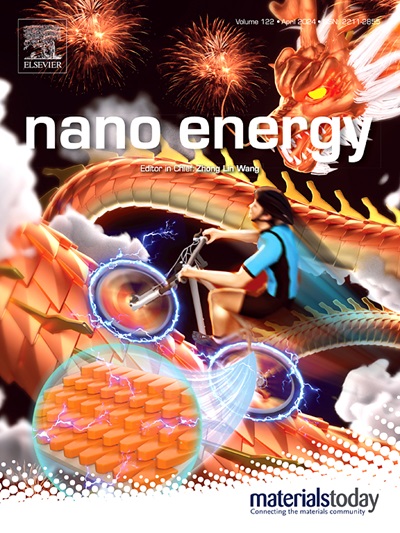Large increase of the thermoelectric power factor in multi-barrier nanodevices
IF 16.8
1区 材料科学
Q1 CHEMISTRY, PHYSICAL
引用次数: 0
Abstract
Improving the power factor (PF) of thermoelectric materials, crucial for enhancing the power output of thermoelectric generators, is challenging due to the adverse interdependence of the Seebeck coefficient and the electrical conductivity on carrier density. We introduce a novel strategy employing energy filtering via built-in potential barriers to alleviate this dependency, significantly enhancing the PF. Utilizing electron-beam lithography, we developed a Si-based nanodevice featuring a multiple well/barrier design. Measurements yielded a PF of 11 mW m−1 K−2, more than doubling the optimal PF achievable in bulk silicon. Experimental findings align well with theoretical models, affirming the efficacy of the approach. Leveraging established silicon technologies in device fabrication unveils pathways for on-chip micro-energy harvesters and localized Peltier coolers. Moreover, the results validate a material-agnostic energy filtering model, guiding the creation of PF-enhanced devices across various thermoelectric materials.


大幅提高多势垒纳米器件的热电功率因数
提高热电材料的功率因数(PF)对增强热电发电机的功率输出至关重要,但由于塞贝克系数和电导率与载流子密度之间存在不利的相互依存关系,因此提高功率因数具有挑战性。我们引入了一种新策略,通过内置势垒进行能量过滤,以减轻这种依赖性,从而显著提高 PF。利用电子束光刻技术,我们开发出一种基于硅的纳米器件,采用多孔/势垒设计。测量结果表明,PF 为 11 mW m-1 K-2,是体硅最佳 PF 的两倍多。实验结果与理论模型十分吻合,证实了该方法的有效性。在器件制造中利用成熟的硅技术为片上微型能量收集器和局部珀尔帖冷却器开辟了道路。此外,研究结果还验证了一种与材料无关的能量过滤模型,可指导制造各种热电材料的珀尔帖增强器件。
本文章由计算机程序翻译,如有差异,请以英文原文为准。
求助全文
约1分钟内获得全文
求助全文
来源期刊

Nano Energy
CHEMISTRY, PHYSICAL-NANOSCIENCE & NANOTECHNOLOGY
CiteScore
30.30
自引率
7.40%
发文量
1207
审稿时长
23 days
期刊介绍:
Nano Energy is a multidisciplinary, rapid-publication forum of original peer-reviewed contributions on the science and engineering of nanomaterials and nanodevices used in all forms of energy harvesting, conversion, storage, utilization and policy. Through its mixture of articles, reviews, communications, research news, and information on key developments, Nano Energy provides a comprehensive coverage of this exciting and dynamic field which joins nanoscience and nanotechnology with energy science. The journal is relevant to all those who are interested in nanomaterials solutions to the energy problem.
Nano Energy publishes original experimental and theoretical research on all aspects of energy-related research which utilizes nanomaterials and nanotechnology. Manuscripts of four types are considered: review articles which inform readers of the latest research and advances in energy science; rapid communications which feature exciting research breakthroughs in the field; full-length articles which report comprehensive research developments; and news and opinions which comment on topical issues or express views on the developments in related fields.
 求助内容:
求助内容: 应助结果提醒方式:
应助结果提醒方式:


